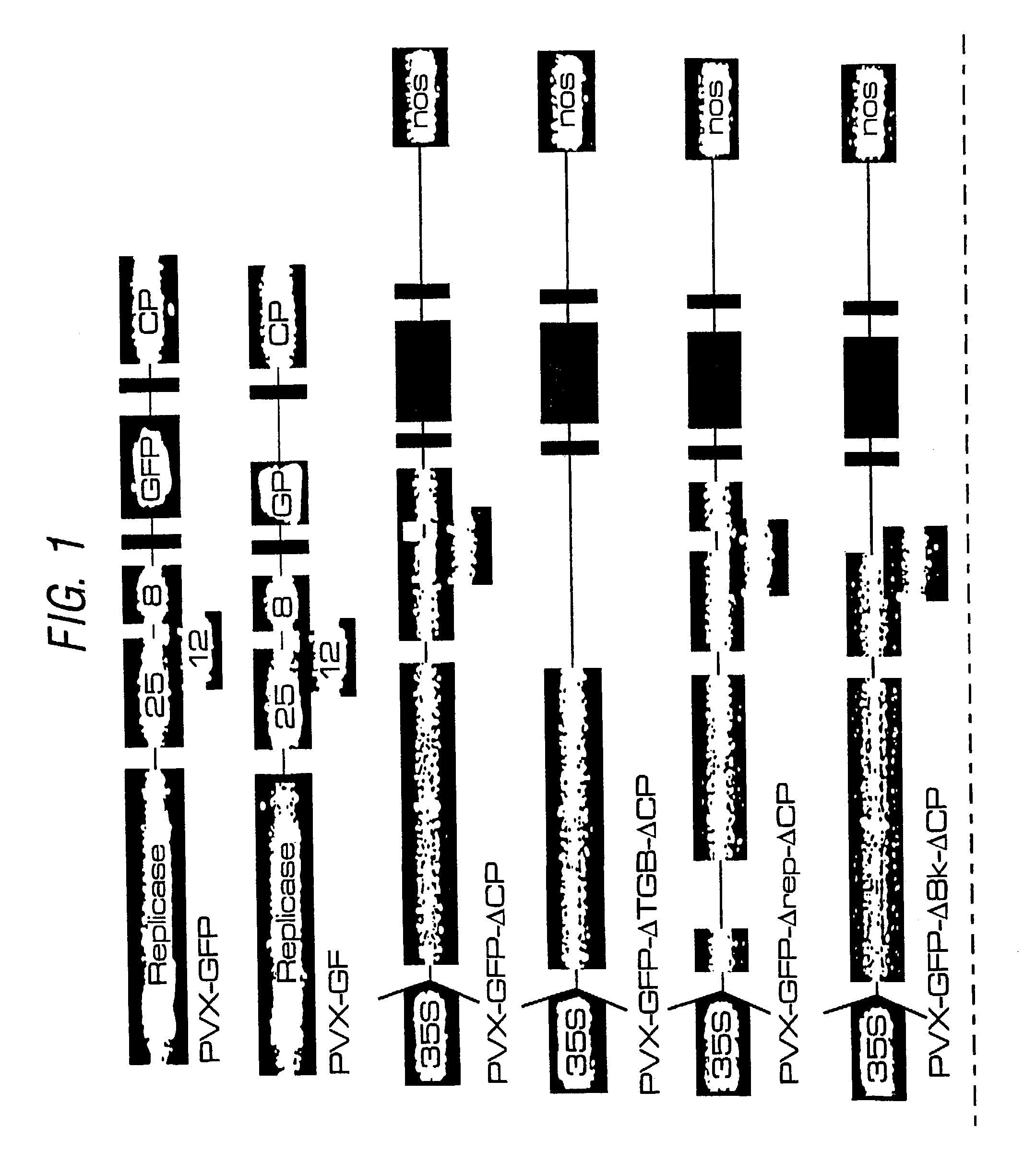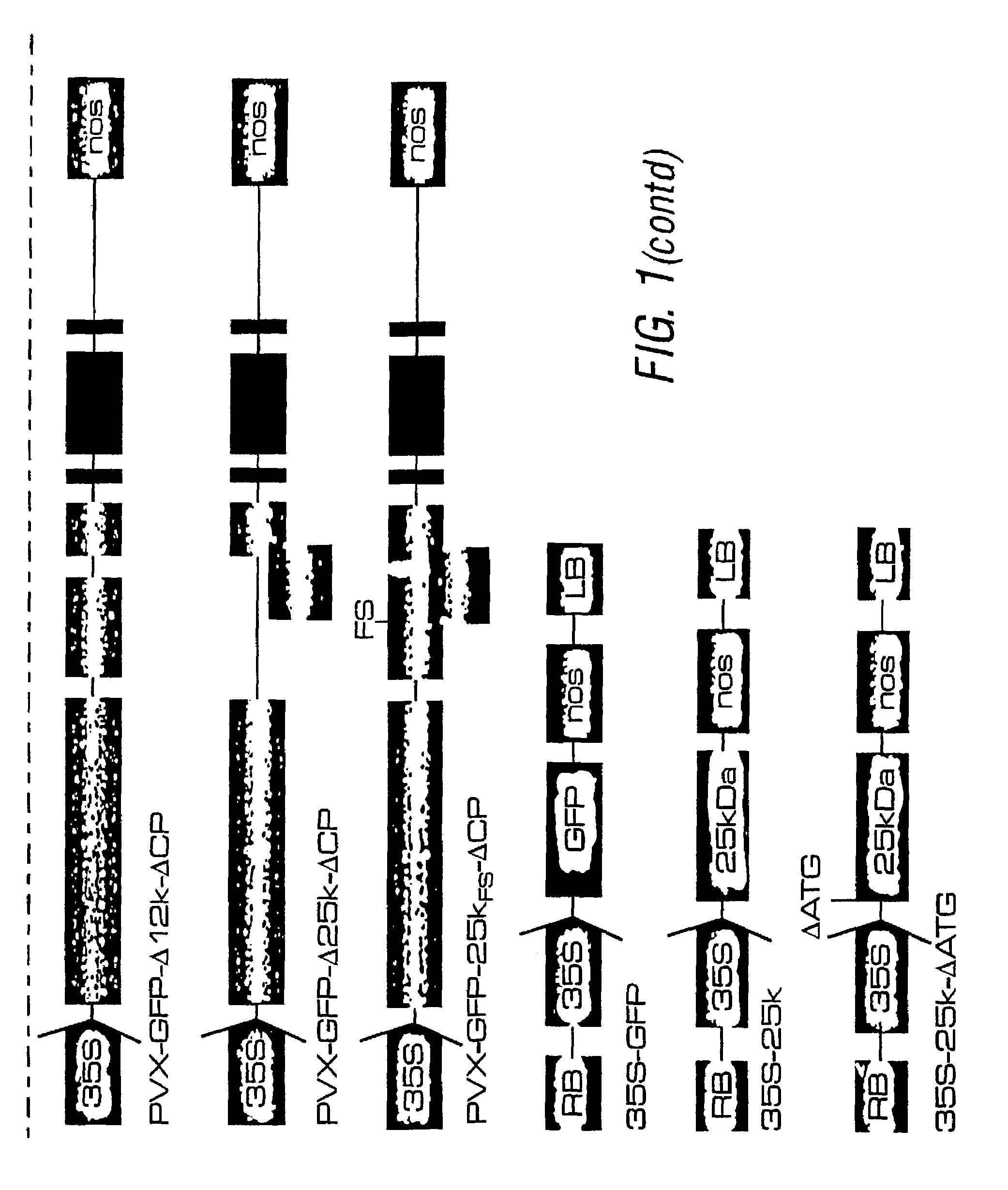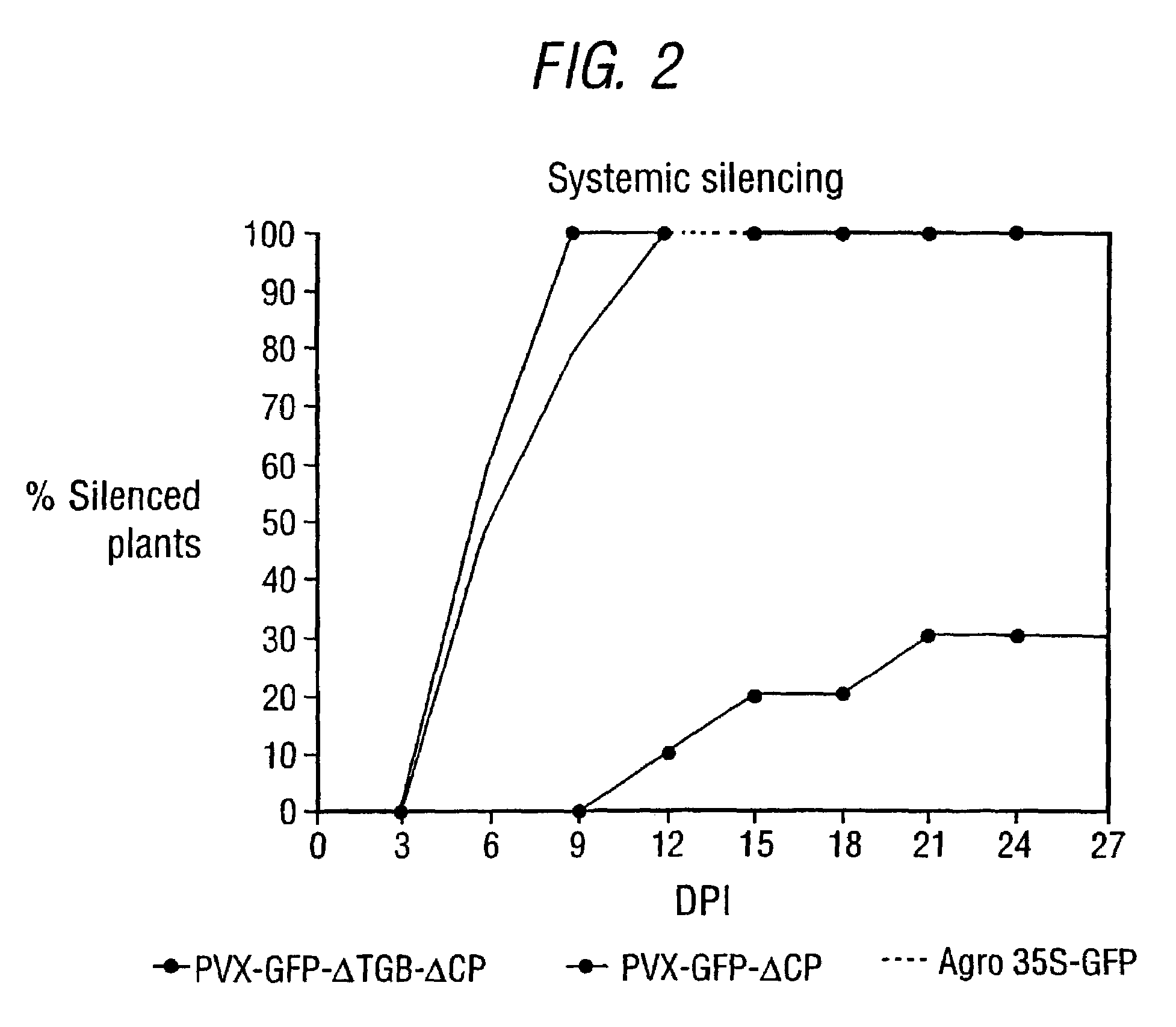Enhanced transgene expression by co-expression with a suppressor of post-transcriptional gene silencing (PTGS)
a transgene and suppressor technology, applied in the field of post-transcriptional gene silencing, can solve the problems of hyper-susceptibility to virus, plant defect in ptgs, etc., and achieve the effects of enhancing expression, reducing likelihood, and high levels
- Summary
- Abstract
- Description
- Claims
- Application Information
AI Technical Summary
Benefits of technology
Problems solved by technology
Method used
Image
Examples
example 1
Suppression of Gene Silencing by Diverse Plant Viruses
[0153]Certain of the viruses tested suppressed gene silencing in N. benthamiana (Table 1). With several viruses, suppression occurred in old leaves (OL) that had emerged before the virus had spread, as well as in new emerging leaves (NL). This was reminiscent of the pattern of silencing suppression previously described for PVY (12). In contrast, tomato bushy stunt virus (TBSV) only suppressed gene silencing in new emerging tissues, as was previously reported for CMV (12). Foxtail mosaic virus (FoMV), alfalfa mosaic virus (AMV) or tobacco black ring virus (TBRV) were like PVX in that they were fully infectious but did not have any effect on GFP silencing (but see Example 9 below). Based on these results it would appear that PTGS suppression is a property of a variety of plant viruses. However, since the spatial pattern and degree of suppression varied extensively between viruses, it was likely that different mechanisms are involve...
example 2
Suppression of PTGS by the Geminivirus-Encoded AC2 Protein
[0156]Tissues were photographed under UV illumination from a dissecting microscope at 15 DPI. The red tissue corresponds to chlorophyll fluorescence under UV, and thus is indicative of gene silencing of GFP. The green fluorescent tissue that sometimes appears yellow is from expression of GFP, and thus indicates suppression of gene silencing. As shown in Table 1, infection of African cassava mosaic geminivirus (ACMV) led to suppression of GFP silencing at about three weeks post-inoculation in both fully expanded and new emerging infected tissues.
[0157]Northern analysis was performed in RNA extracted at 20 DPI from either mock infected, non-silenced (NS) or silenced (S) N. benthamiana infected with ACMV, PVX-AC2, PVX-mAC2 or PVX. RNA samples were taken either from inoculated leaves, old leaves that had emerged before the virus had spread systemically, or from new leaves emerging after virus infection (NL). Equal amounts of each...
example 3
Vein Specific Suppression of Silencing by the 19K Protein of TBSV
[0160]N. benthamiana infected with TBSV showed reversion of PTGS at about 3 weeks post-inoculation, when symptoms were fully systemic (Table 1). Again photographs were taken under UV illumination from a dissecting microscope at 20 DPI. As in CMV infected plants the restoration of green fluorescence occurred only in new emerging infected leaves. However, this suppression of silencing was weaker than with CMV, so that the green fluorescence was barely detectable under UV illumination from a hand-held lamp. Also unlike CMV, TBSV only suppressed PTGS in and around the veins. Vein-specific reversion of GFP was more evident when detached, new emerging leaves were observed under a dissecting microscope.
[0161]Northern analysis of RNA was performed on samples extracted at 20 DPI from silenced (S) N. benthamiana infected with PVX-19K or PVX-m19K. RNA samples were taken either from old leaves or from new emerging leaves. Equal am...
PUM
| Property | Measurement | Unit |
|---|---|---|
| time | aaaaa | aaaaa |
| time | aaaaa | aaaaa |
| Tm | aaaaa | aaaaa |
Abstract
Description
Claims
Application Information
 Login to View More
Login to View More - R&D
- Intellectual Property
- Life Sciences
- Materials
- Tech Scout
- Unparalleled Data Quality
- Higher Quality Content
- 60% Fewer Hallucinations
Browse by: Latest US Patents, China's latest patents, Technical Efficacy Thesaurus, Application Domain, Technology Topic, Popular Technical Reports.
© 2025 PatSnap. All rights reserved.Legal|Privacy policy|Modern Slavery Act Transparency Statement|Sitemap|About US| Contact US: help@patsnap.com



